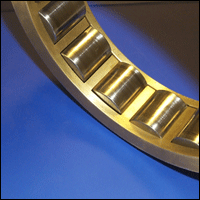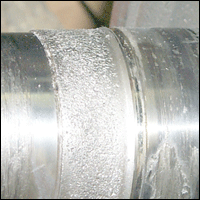 Rolling bearings analysis Rolling bearings analysis
After replacing worn out bearings, the same are turned to the laboratory in order to check their impairment and to accurately know the alarm levels in the control system.
Failures analysis
Application of multiple disciplines, techniques and methodologies in order to correct errors or deviations in design, material, manufacturing, inspection, storage, transportation, assembling or maintenance. The objective is to prevent future repetitions, avoiding loss and physical damage to people and unproductive hours.
The types of failures that take place are:

- Ductile and fragile breakages
- Fatigue
- Wearing out
- Creep
- Erosion
- Overheating
- Damage by hydrogen
- Localized and generalized corrosion
- Cracking by corrosion under tension
The sources for failures are:
- Overloading
- Vibrations
- Errors in heat treatment, design, material selection, forge, fusion, welding, surface coverings.
- Contamination of fluid media or deviations in their treatment.
In order to solve failure problems the following techniques are used:
 Photography Photography
 Metallography Metallography
 Replica Replica
 Conventional chemical analysis Conventional chemical analysis
 Stereoscopic macroscopy Stereoscopic macroscopy
 Physical tests Physical tests
 Hardness tests Hardness tests
 Optical microscopy Optical microscopy
 Electronic microscopy Electronic microscopy
 Microsond Microsond
|

